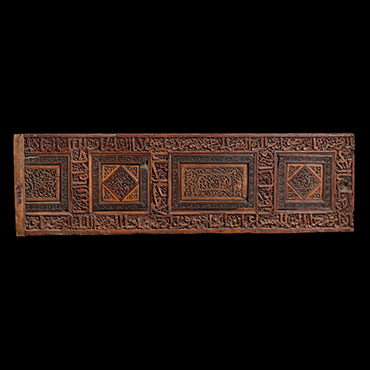The Museum of Islamic Art (MIA) is located in the heart of historic Cairo. Its early history began with the establishment in AH 1310/1892 CE of the Arab Museum within the courtyard of the al-Hakim under the auspices of the Comité de Conservation des Monuments de l’Art Arabe, which was founded under the Ministry of Awqaf by order of Tawfiq Pasha, khedive of Egypt and Sudan (r. AH 1296–1310/1879–92 CE) with the objective of studying and preserving the Islamic and Coptic monuments in Egypt. Its present headquarters was opened in AH 1321/1903 CE by ‘Abbas Hilmi Pasha (r. AH 1310–32/1892–1914 CE). One of the great collections worldwide, MIA now holds over 100,000 works of art including rare manuscripts—literary, documentary, Qur’anic, and calligraphic—as well as masterpieces in many other media.
MIA today is embedded in its community as a place of artistic education, offering classes and workshops for all ages and abilities, hosting school visits, and creating a sense of cultural belonging and identity. It continues to participate in archaeological excavations, mount exhibitions in its galleries, and participate in exhibitions across the Islamic World, Europe, and North America. MIA, a participant in the first edition of AlMadar at the Islamic Arts Biennale, returns with an exhibition exploring geometric design as a fundamental aspect of mathematics and the art of numbers.
New from old: the art of Egyptian cut-stone work
Under the Ayyubids, and particularly the Mamluks, decorative surfaces made up of assemblages of composite materials—including stone, glass, mother-of-pearl, metals, and woods— flourished, with several variations in technique and inspiration. In architecture, cut-stonework veneers were used to decorate religious buildings commissioned by prominent Mamluks and their families. Cut-stone compositions of various marbles and granites were used especially on qiblah walls and the floors of prayer halls to create striking, colorful compositions. The designs are so sophisticated that the architects may have worked from a catalog of ideas stored in a scroll, much like the 10th-century AH/16th-century CE scroll from Tashkent also displayed in AlMadar.
Because marble had not been quarried in Egypt since late antiquity, the materials used to create the stone compositions came from recycled elements, chiefly columns from ancient Egyptian and Roman buildings, but also from the palace of the Ayyubid al-Malik al-Salih on Rawdah Island, which served the Mamluks as a “quarry” for luxury building materials. Some colored marbles were imported, while other materials were unique to Egypt, such as turquoise-colored faience, a quartz-based glazed ceramic. Similar patterns can be found in other regions such as al-Andalus and the Maghrib. The blue and white pattern shown here made of just three shapes, a diamond, a square and a triangle, is also found at the Alhambra Palace in cut-tilework.
top to bottom
Cut-stonework panel
Cairo, Egypt, c. AH 622/1225 CE
Said to come from the Al-Sultan al-Kamil Mosque
(completed about AH 622/1225 CE)
Colored marbles, porphyry, h. 32 × w. 29 cm
Museum of Islamic Art, Cairo, 88
Cut-stonework panel
Cairo, Egypt, 8th century AH/14th century CE
Marble and Egyptian faience
h. 30 × w. 22 cm
Museum of Islamic Art, Cairo, 4597

